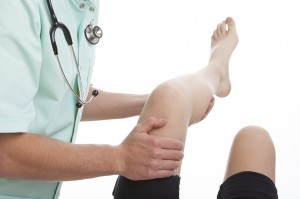The Symptoms of Osteoarthritis (OA)
 The pain that is caused by osteoarthritis (OA) only becomes more pronounced when moving the affected joints or when pressure is applied to the area. In addition, the symptoms of OA can be affected by fluctuations in the weather for many people. Contrary to popular belief, weakness in the joints and chronic fatigue are not symptoms that are associated with osteoarthritis, so presence of these indications would mean that you have some other medical condition.
The pain that is caused by osteoarthritis (OA) only becomes more pronounced when moving the affected joints or when pressure is applied to the area. In addition, the symptoms of OA can be affected by fluctuations in the weather for many people. Contrary to popular belief, weakness in the joints and chronic fatigue are not symptoms that are associated with osteoarthritis, so presence of these indications would mean that you have some other medical condition.
(Have you been diagnosed with osteoarthritis? Then you may be a perfect candidate to take part in a OA clinical trial.)
During the initial stages of osteoarthritis, patients usually feel palpable relief when their joints are not in motion. However, as this disease progresses, the joints may soon begin to ache even while stationary. The joints may also become quite stiff and difficult to move after extended periods of rest, especially after waking up in the morning.
In general, the symptoms of osteoarthritis tend to progress at a gradual pace over the years. Some people might not even experience any noticeable symptoms during the earliest stages of this disease (this is often the case if they are under the age of forty). Since it can take some time before real symptoms start to manifest, many people may not realize that they have osteoarthritis for years.
Common OA Symptoms
The most common symptoms that are associated with osteoarthritis (OA) include the following:
- Joint stiffness
- Joint pain
- Inflamed joints
- Morning joint stiffness
- Joint tenderness
- Joint malformation
- Bone spurs
- Limited range of motion in affected joints
- Muscle spasms
- Tendon contractions
- Joint buckling
- Unstable joints
- Cracking sound in joints (Crepitus)
- Worsening coordination
- Deteriorated dexterity
- Joint locking
- Poor posture
Since this disease is localized, different cases of OA are characterized by the type of joint that is primarily affected. This is most effective since osteoarthritis symptoms in the knee can be quite different than OA symptoms in the wrist. This disease tends to affect the joints that receive the most wear and tear from regular everyday activities, like the knees or even the hip.
Osteoarthritis in the Hip Joints
Osteoarthritis of the hip obviously can cause a good deal of pain in the localized area, but it can also cause additional pain in the buttocks, knees, and groin. Many patients will develop a limp and can lose the full range of motion in their hips. Osteoarthritis can affect either one hip joint or both at the same time. This form of osteoarthritis is quite common because the hip joint bears a good deal of weight and is used often.
Osteoarthritis in the Knees
Patients which develop osteoarthritis in their knees will usually find this disease to be quite debilitating. OA symptoms in the knee often include a limited range of motion and swelling. This is another very common form of osteoarthritis due to the amount of wear and tear that the knee joints undergo naturally.
Less Common Types of Osteoarthritis
If the finger joints are affected, they could eventually become malformed and even develop cysts. Patients who experience OA symptoms in their shoulder often had some previous injury to that area. This may also lead to additional stiffness in the neck and shoulders. Osteoarthritis of the spinal cord is mostly characterized by lower back pain, pinched nerves, difficulty swallowing, neck pain, muscle spasms, numbness, loss of mobility, and muscle fatigue. All of these types of OA are much less common than those that develop in the knees or hips.
If you have been experiencing intense joint pain that lasts for more than two weeks or have difficulty moving the affected joint, you need to contact your primary health care provider ASAP. Patients who have been diagnosed with OA will need to have the condition of their bones and joints checked on a regular basis. Please take care to follow your doctor’s instructions and stick to your osteoarthritis treatment plan in order to prevent your disease from getting worse.